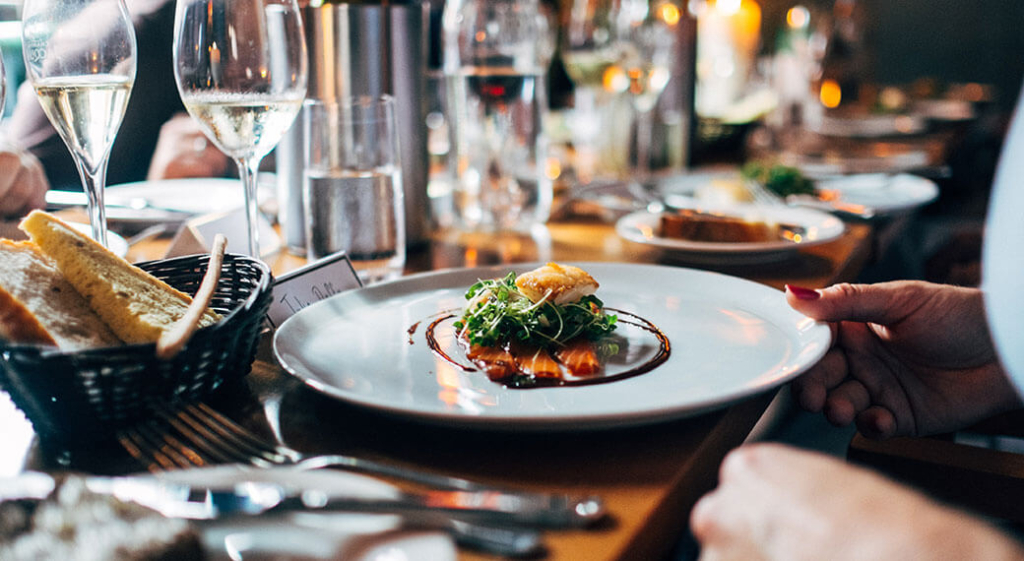Michelin Guides are the beacons of true fine dining. Stars are only awarded to the best restaurants in any given city and they aren’t easy to obtain. Subsequentially, many would argue that there is no greater gastronomic prestige than receiving and maintaining the three-star award.
In this article, we dive into the history of the Michelin Guide. Next, we review the symbols and awards used in the publication. Then, we’ll gain a better understanding of the guidelines inspectors use to rate restaurants, as well as the codes of conduct they live by to ensure fairness and anonymity. Lastly, we examine the pros and cons of receiving Michelin stars and why the culinary world has a complicated take on the nature of this award.
How to Sell Tires, the French Way
In 1889, French brothers Andre and Edouard Michelin founded a tire company. Little did they know of the ripple effect this decision would have on the foodservice industry, over 100 years later.
Back in the late 1800s, driving was considered a luxury. At the time of its inception, their tire business was suffering as there were only 2200 cars in France. However, as savvy businesspeople, the brothers could see the writing on the wall and decided to think outside the box. Thus, they turned to vertical integration.
In 1900, Andre and Edouard needed a way to motivate people to wear out their tires faster. Their solution was to publish a free travel guide with reviews of exquisite and charming restaurants and hotels. This way, they could showcase wonderful destinations that people could drive to.
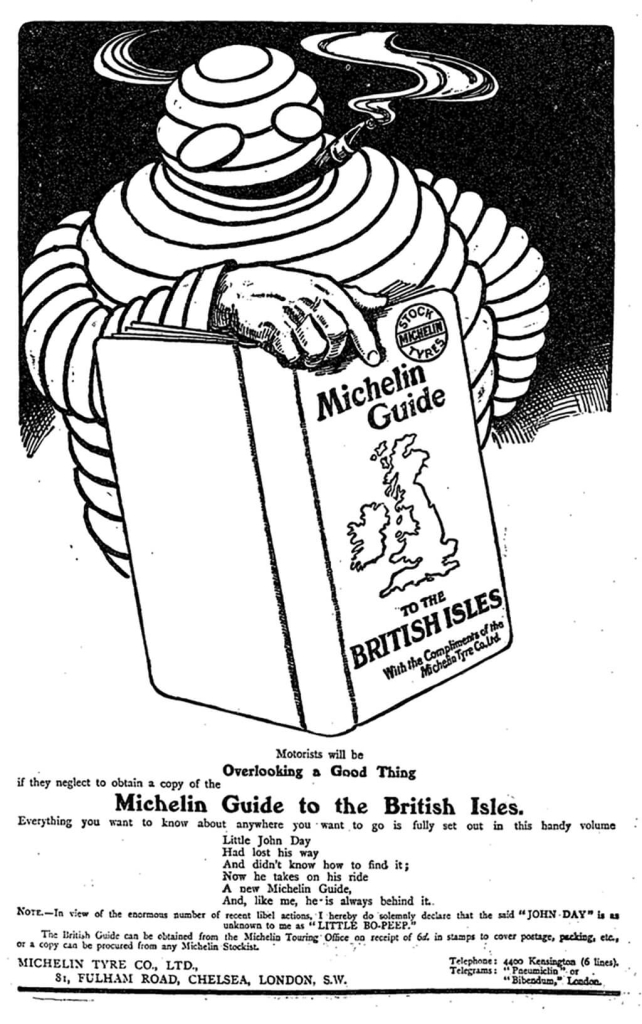
The Michelin brothers’ motorist guide also included maps, instructions on how to change tires, and places where drivers could fill up their gas tanks. Highlighting destination travel as a lifestyle ultimately brought cars into the forefront of entertainment, which in turn led to an increase in tire purchases. But the free guide didn’t stop there.
A Star Is Born
During the 1920s and 1930s, big changes were afoot as Andre and Edouard decided to monetize their travel guide. Additionally, secret reviewers were hired and the first iteration of star rankings that have since become synonymous with the publication were added. Eventually, they dropped hotels from their guide and devoted the entire text to restaurants and gastronomy. Today, the guide is still growing and covers cities in 25 countries.
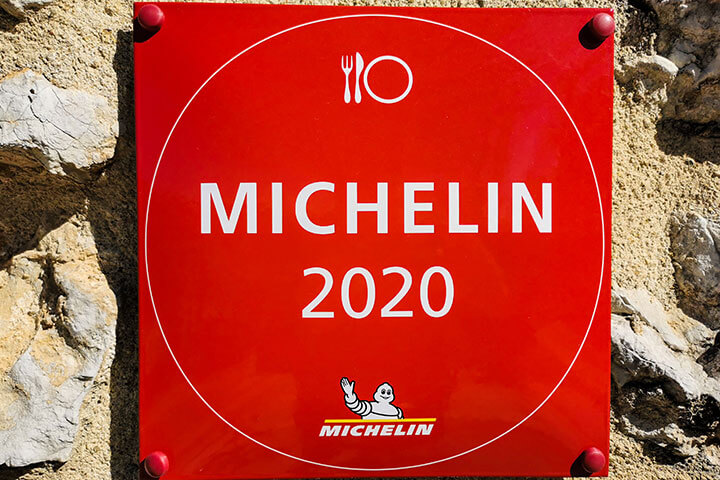
How Does the Michelin Guide Work?
The Michelin Guide keeps their reviews short and sweet. The authors convey their impression of a foodservice establishment in a quick two-or-three lines due to the publication’s extensive use of symbols.
In this section, we explain the meaning of star ratings and the symbols used in their book, as well as miscellaneous awards such the Bib Gourmand.
Star Ratings
According to their website, the star ratings are meant to convey the following messages:
✽ One star – High-quality cooking, worth a stop!
✽ ✽ Two stars – Excellent cooking, worth a detour!
✽ ✽ ✽ Three stars – Exceptional cuisine, worth a special journey!
To earn three stars, reviewers expect perfection and many wow moments.
Symbols and Alternative Awards
The Michelin Guide awards restaurants beyond stars. Symbols and alternative awards are noted in the publication for the following qualities and characteristics:
Widespread Symbols: Found in most editions and regions are symbols letting the readers know more about the restaurant. These include terrace dining, covers, interesting views, simple shops, street food, and counter dining.
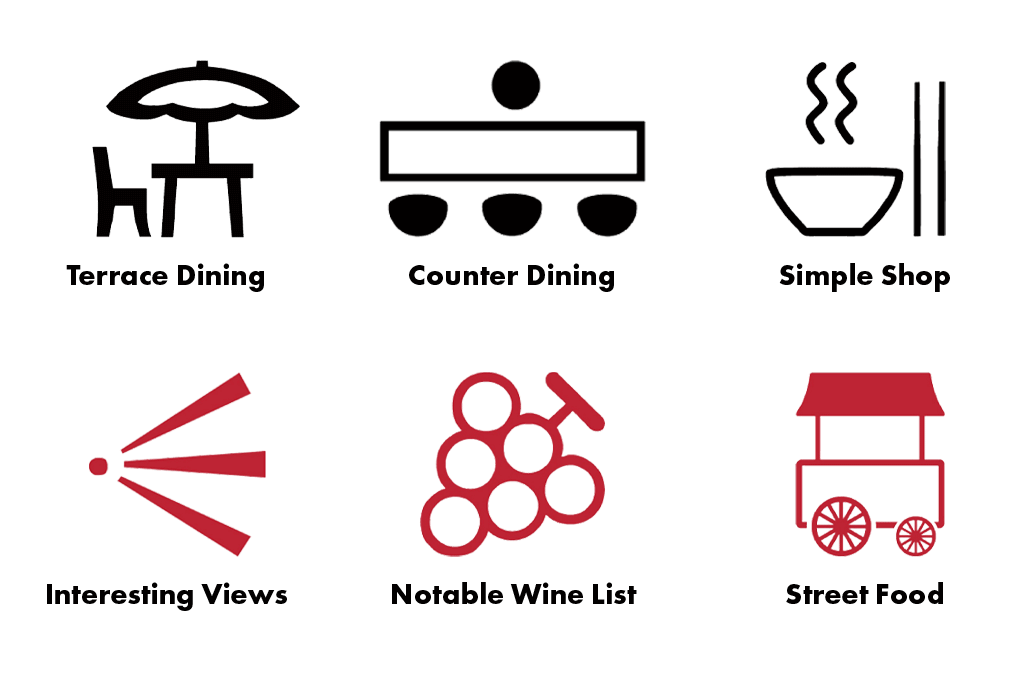
Bib Gourmand: A less prestigious award that recognizes friendly establishments that serve good food at moderate prices. It is named after Bibendum, the Michelin mascot.
Global Variance: Some countries have their own awards based on their food and beverage culture. For instance, in Spain, the best tapas bars are recognized by a toothpick/wine symbol. Similarly, in the UK/Ireland, quality pubs receive a beer mug symbol.
L’assiette: Found only in the Paris edition since 2016, l’assiette, or the plate symbol recognizes restaurants that simply serve good food.
Alcohol: Grape, sake bottle and cocktail glass symbols are awarded to restaurants that have impressive wine, sake, or cocktail lists.
Green Stars: In 2020, Michelin debuted the Gastronomic Sustainability Award, in an effort to recognize sustainable practices.
Guidelines
Next, we’ll take a look at the five guidelines Michelin inspectors use to rate restaurants. Their evaluations are based on the following qualities:
- Quality of products – Inspectors look for the highest quality ingredients possible. However, that does not mean restaurants must use luxury products, such as caviar. High-quality, fresh ingredients go a long way with inspectors, no matter how simple they may seem.
- Mastery of flavor and cooking techniques – There should be a balance of ingredients, not just luxury products. For example, inspectors pay close attention to texture, colors, and food temperature.
- The personality of the chef represented in the dining experience – Although it is the restaurant receiving the award, inspectors keep the head chef in mind, especially if they are a big name.
- Value for money / Harmony of flavors – The overall experience helps an inspector decide on the value for money. For instance, was the meal memorable? What were the wow factors? In some regions, harmony of flavors is used in lieu of the value metric.
- Consistency between inspectors’ visits – Inspectors base their rating on two or three visits to check for food consistency.
Aside from these guidelines, inspectors have their own code of ethics and set of responsibilities.
Inspectors
Now, we’ll take a look at the rules inspectors live by to maintain their secrecy and, in theory, produce incorruptible work. The Michelin website lists six attributes as their inspector’s core values. Their website also provides the public with an anonymous interview with one of their inspectors. This Thailand-based inspector expands a bit on these core values and how they affect him on the job and in his personal life.
The following is the list Michelin provides as well as some additional commentary from the inspector interview:
- Anonymity: Although our inspectors are employees of Michelin, they’re above all customers first – just like you. Testing restaurants in complete anonymity in order to ensure that they do not receive any special treatment is essential to the creditability of the Michelin Guide.
The inspector notes that much of his immediate family doesn’t know what he does for a living, to maintain secrecy. Inspectors act like normal citizens when inspecting a restaurant. Cellular devices and social media have been a blessing to inspectors as it allows them to photograph food and take notes discretely, if need be.
- Independence: Michelin Inspectors are employees of the Michelin Group only and are not linked to any other organizations. Inspectors always pay for their meals in full to ensure independence.
The Guides and their inspectors want to know how the average guest experiences the establishment, without any special treatment.
- Expertise: Our inspectors are experts in food, dining and hotel sectors with many years of experience working in the hospitality industry.
The inspector interviewed by the Michelin Guide says that he has 14 years in the food and beverage industry prior to this role. But he notes the most important qualification to have is a passion for cuisine, as an inspector’s world is deeply immersed within the restaurant industry.
He also reports that the many training sessions provided after hiring are taught by other inspectors who have been in the role for over 30 years.
- Reliability: The different categories awarded by the guide are never the result of one inspector’s assessment. Michelin Stars are given by a collective of inspectors who visit the establishment multiple times.
As the inspector clarifies, final decisions are based on the consensus of the entire team and that the process is very democratic.
- Passion: What would be the point of so much work and such a strict approach if our inspectors weren’t passionate about food? Most Michelin Inspectors have either worked in the hospitality business or cooked in kitchens themselves – rest assured our reviews are written with passion, integrity and knowledge.
Passion includes keeping up with trends within the sector. The inspector reports that locale cuisine is a major trend, leading the Michelin Guide to take the culture of geographic regions into consideration. The second trend is sustainability. For instance, in Thailand, local ingredients are revered as they reduce imports, thereby reducing food miles and dependence on other countries’ exports.
- Quality: Any restaurant can be reviewed for our guides as long as the establishment is deemed high-quality based off Michelin’s 5 restaurant rating criteria.
Visiting every restaurant is nearly impossible in, for example, Bangkok, so each team member conducts research before deciding as a group which restaurants to cover. Every individual has the right to nominate the restaurants they deem worthy of an inspection.
The Rogue Inspector
In 2004, Pascal Remy wrote a tell-all book called L’inspecteur Se Met A Table. For 16 years, he had been employed as a Michelin inspector in France and kept a diary throughout that time. The first version of his book was a collection of lighthearted anecdotes. However, when the company found out about his plans, they allegedly tried to bribe him to not publish the book. Pascal Remy refused and was subsequentially fired for confidentiality violations. After his firing, the content of the book changed into a more provocative tone.
There are several main takeaways from Remy’s tell-all book: First, he alleged that not all restaurants rated in the book are visited each year, which was later verified by a company spokesman. Next, he criticized the company for becoming too commercial and no longer seeking out hidden gems. Instead, the company focused more on big, money-making restaurants.
Perhaps the most damning accusation was his belief that some chefs and restaurants were untouchable. For instance, if a big-name chef/owner lost a star, they would wage war until it was returned to them. While his accusations don’t point to corruption, they do illustrate a lack of streamlined efficiency and impartiality that the company claims to maintain.
Do All Restaurants Benefit From a Michelin Star Rating?
Receiving Michelin stars is a dream come true for many chefs. Often, it is regarded as the ultimate compliment in the world of gastronomy and something that takes years of passion, sweat, and absolute devotion to achieve, if ever. In this section, we provide an overview of some positive and negative experiences chefs and restaurants have had after having their receiving Michelin stars, starting with the good.
A New Status Among Mortals
Earning Michelin stars boosts a chef’s earning and celebrity status potential. For instance, chefs credited for 2 stars tend to bring home six figure salaries, while celebrity chefs have the earning potential of millions of dollars. Many well-respected chefs of today trained under Michelin-starred culinary artists whom they admired and respected. So, for many, working toward those stars has been a goal since the beginning of their careers.
Restaurants that earn Michelin stars gain entry and status in an elite gastronomic world. Suddenly, new customers aren’t simply stopping by to try your food out of convenience or on a whim. Instead, they could make a special trip out of state, country, or even fly across continents for a taste. So, a Michelin star results in an automatic boost in sales as well as a new customer base. However, as it turns out, a new customer base isn’t always a positive for all restaurants.
Why Some Restaurants Prefer Staying Out of the Spotlight
There are a number of reasons why not all restaurants and chefs benefit from earning Michelin stars, from the constraints of “Consistency” to visits from the authorities. Here are several real-life scenarios that chefs and business owners have experienced after receiving their award.
- Food trucks and other street food vendors who have earned stars risk being unable to handle the crowds of people that follow. If the business model wasn’t created to feed the masses, food trucks can easily be overwhelmed with people, resulting in more stress for the owners and potentially unhappy customers.
- Quiet neighborhoods can turn into a circus after a restaurant receives their stars. This can be upsetting to neighbors in ordinarily calm communities. When a restaurant attracts this amount of attention, business owners may deal with noise complaints, reduced parking, and visits from the local authorities.
- When asked to describe what people envision a Michelin-starred restaurant to look like, most picture a French fine dining establishment with meals costing hundreds of dollars or more. If a restaurant has a more casual, rustic approach to their food and décor, they receive a litany of daily complaints from travelers and people who went out of their way to visit the destination. This is because it didn’t live up to people’s expectations of how a Michelin-starred restaurant should look and feel.
- Consistency is the dreaded “C” word for many chefs whose restaurants have received Michelin stars. In order to retain those stars, inspectors come back to check for consistency. What this standard has unintentionally created, however, is a lack of creativity due to fear. Many chefs are scared to experiment with different ideas and concepts. In fact, some restaurants simply don’t change their menu after being awarded three stars. They feel there is too much risk of losing a star if they deviate from their norm.
All of these examples have sent chefs packing and some businesses have closed after the joy and intention of their craft has been, as they see it, permanently undermined. And then there is the pressure to maintain the standards that earned the restaurant its stars in the first place.
The Broken Hearted
French haute cuisine is deadly serious business. Working in a traditional French kitchen is military-grade tough. Verbal abuse, shouting, long hours that bring exhaustion to even the most able of bodies, sexism, and violence are all part of the traditional French kitchen. Many chefs that are now masters started training in their teens, working 18-hour days, 7 days a week, for years.
For those who stay immersed in French restaurant culture, their pride, self-esteem, and self-worth is directly tied to their life’s work, aka, their kitchens. Therefore, the critical and public perceptions of their kitchen is everything.
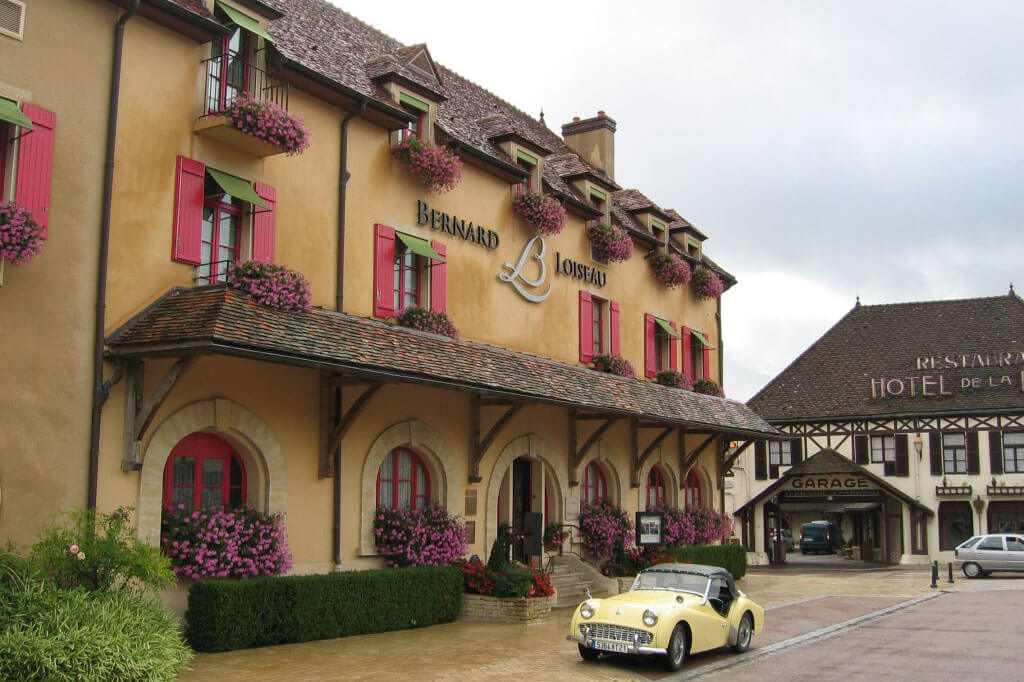
As we’ve noted, controversy finds its way to the Michelin Guide. The sheer make-or-break power of a business or career, especially in France, has been topic of concern. The pressure of maintaining Michelin stars can prove to be too much stress and pressure. Losing stars, however, can lead to utter heartbreak. This was particularly exemplified after the suicides of famous chefs, Bernard Loiseau and Benoit Violier.
The suicides of both men have brought to light the pressure that French haute cuisine chefs face day after day. Bernard Loiseau’s death was linked having a three-star restaurant receive a reduced rating. On the other side of the spectrum, it has been suggested that Benoit Voilier found himself mentally and emotionally crushed from the pressure of maintaining his superstar status.
The Future of the Michelin Guide
Despite its bittersweet impact to chefs and restaurants, the Michelin Guide remains a gastronomic bible, especially in Europe. As the Michelin Guide expands and evolves with the times, such as adding their sustainability award, we look forward to seeing what they come up with next. What are your experiences dining in Michelin-starred restaurants? Let us know in the comment section!

